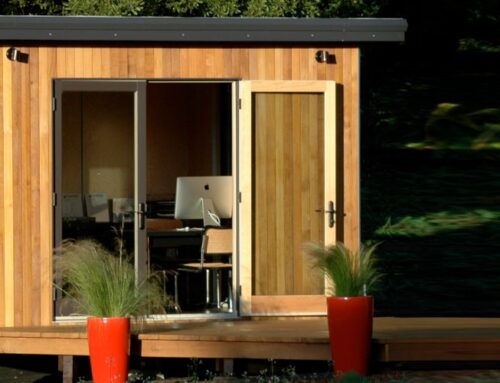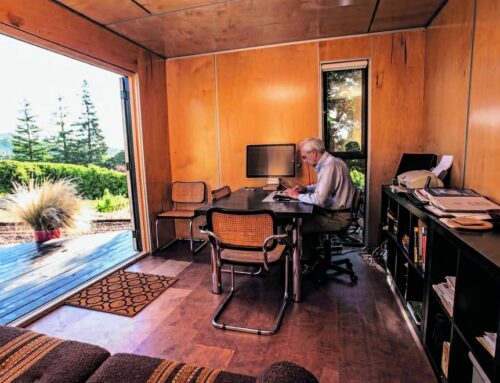Calistoga FAQ’s
The City of Calistoga recognizes that accessory dwelling units (ADUs) can provide affordable housing, accommodate extended family members and facilitate live-in caregivers. The City encourages the development of ADUs through fees that are lower than those for typical single-family dwellings and through more-lenient development standards.
The following information answers common questions about ADUs. Please contact the Calistoga Planning Department for further information at 707.942.2827.
Q. What is an accessory dwelling unit?
A. An ADU is a residence that provides complete independent living facilities (i.e., permanent provisions for living, sleeping, cooking and sanitation) and that is located on the same parcel as a primary single-family dwelling.
Q. How many ADUs are allowed on a lot? A. One ADU is allowed on a lot.
Q. In which zoning districts are ADUs allowed?
A. ADUs are allowed in the Rural Residential (RR), Rural Residential-Hillside (RR-H), One-Family Residential (R-1) and Two-Family Residential (R-2) Zoning Districts.
Q. Must an ADU be attached to the parcel’s single-family dwelling?
A. No. An ADU may be a stand-alone structure. An ADU may also be created through the conversion of space within an existing single-family dwelling if it is provided with independent exterior access, or conversion of an existing accessory building, such as a garage or pool house.
Q. Are there ADU size limitations?
A. ADUs may contain up to 750 square feet of floor area and one bedroom. However, the floor area of an ADU created through an addition to a primary single-family unit may not exceed 50 percent of the primary unit’s existing living area. There is no minimum required size for an ADU, but the unit must comply with Building Code requirements.
Q. What design standards apply to ADUs?
A. The Planning Department uses the following design standards when reviewing a building permit application for an ADU:
- The ADU must be compatible with the design of the primary dwelling.
- The ADU’s window and door openings must be designed to minimize privacy intrusion for dwellings on adjacent properties.
- The ADU must minimize impacts on neighboring properties’ scenic views of ridge lines and hilltop areas.
Q. Is parking required for an ADU?
A. No. However, if an ADU is created through the removal of parking that is required for the parcel’s single-family dwelling, it must be replaced in a location outside of the minimum required front and side yard setbacks. The replacement parking may be in a tandem arrangement (i.e., one car parked behind another).
Q. What setbacks are required for an ADU?
A. The minimum required rear yard setback for a detached ADU not more than 15 feet in height is 10 feet. The minimum rear yard setback for taller detached ADUs and the minimum side yard setbacks for any detached ADU are the same as for the primary dwelling.
An ADU may be created by converting an existing garage that does not meet the Zoning Code’s minimum setback standards if it meets minimum safety code requirements.
An ADU that is constructed above a garage must maintain a setback of at least five feet from the side and rear lot lines and must meet the Zoning Code’s height regulations.
Q. What permits are required for an ADU?
A. Generally, only a building permit is needed for construction of a ADU. However, depending on a particular parcel’s circumstances, other permits may be required, such as a tree removal permit or an encroachment permit (to allow work in the public right-of-way).
Q. Are fire sprinklers required for an ADU?
A. Fire sprinklers are not required for an ADU if they are not required for the lot’s primary unit. For example, if the existing primary residence does not have fire sprinklers, the ADU need not install a fire sprinkler system. However, installation is strongly encouraged to protect its occupants.
Q. Can an existing illegal building or addition be converted to ADUs?
A. No, unless it is legalized by obtaining a building permit and bringing it into conformance with all applicable codes.
Q. Does the property owner have to occupy the parcel’s primary dwelling unit or the ADU?
A. No. One or both of the dwellings may be rented or leased for periods of 30 days or more. The property owner must obtain a City business license prior to renting or leasing either of the units.
Q. What development impact fees must be paid for an ADU?
A. No connection fees or a separate meter are required when an ADU is created through the conversion of space that legally existed on January 1, 2017 within a single-family dwelling or an accessory structure. Connection fees for ADUs created through an addition to a single-family dwelling or the construction of a free-standing building are $15,802.31 for wastewater and $6,116.72 for water. A detached ADU must be separately metered from the primary dwelling.
Q. What is the difference between an ADU and a guest house?
A. A guest house cannot have a kitchen, or be rented or otherwise occupied as a separate dwelling. It is intended for temporary use by guests of the premises’ permanent occupants.
Calistoga Planning & Building Department



Leave A Comment
You must be logged in to post a comment.